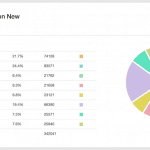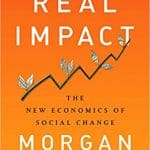Turning the Microfinance Model Upside Down: An Interview with Jeffrey Ashe
In the early days of microfinance – before its dramatic evolution from development sector hero to over-hyped villain and back to somewhat chastened respectability – it captured the imagination of many anti-poverty advocates, among them Jeffrey Ashe. After a stint in the Peace Corps, Ashe spent 20 years designing, evaluating and managing microfinance programs in over thirty countries – but then he grew disillusioned with the approach.
He had seen that the poor actually needed savings rather than just credit. What’s worse, he says, “with great difficulty microfinance was getting down to really poor people. It was fine for entrepreneurs in urban areas, but 80 percent of the population was still being left out.” Then about 16 years ago, he attended a lecture at Brandeis University (where he now is a faculty member) that discussed the impact of village savings groups on financial inclusion in rural Nepal. The model struck him as an ingenious way for poor people themselves to provide each other with access to both savings and credit, while avoiding the shortcomings of formal microfinance.
These savings groups have existed for centuries in developing countries – indeed, they’re so common that they’re known by over 200 names across three continents – and according to advocates, they have many advantages over formal financial services. They have a simple, easy-to-understand structure, collecting fixed deposits from members on a set schedule, then distributing these combined deposits to each member in turn – and sometimes collecting and lending out additional money, at interest. Launched, managed and financed by group members themselves rather than outside institutions, they serve remote rural communities that even microfinance can’t profitably reach. Group members are accepted based on their social ties and reputation, not a bank’s assessment of their creditworthiness. And best of all, any interest collected stays in the community, contributing to documented social impact in the form of reductions in chronic hunger, and increases in savings and assets. As Ashe describes it, the groups represent “a totally different model that took the microfinance paradigm and turned it completely upside down.”
After researching how the savings group program worked in Nepal, Ashe began working to introduce a similar approach in other countries. These efforts grew into the Saving for Change program, which he designed and led through Oxfam America and Freedom from Hunger, and that helped establish 35,000 savings groups in five countries. According to Ashe, that translates to “700,000 villagers in some 10,000 villages managing, by themselves with no staff input whatsoever, 35 million transactions a year.” With the support of other NGOs, the Saving for Change model has become a movement that hopes to reach 50 million people by 2020. If that sounds like a tall order, he offers some intriguing statistics: “Of the $32 billion a year that goes into financial inclusion, of that there’s $3 billion in grants. If the grants from just one year that are invested in creating financial institutions were invested in savings groups, this could easily translate into 200 million savings group members who would be generating, within four or five years, $10 billion worth of economic activity – of which $3 billion would be profits into the pockets of really poor people.”
In this frank interview, Ashe discusses the history of the savings group model, how it improves upon microfinance and whether the sector views it as a threat. He also talks about the (somewhat surprising) countries where savings groups have had the most uptake – and why they don’t get as much attention as institutional efforts like microfinance, in which people “visualize themselves as the saviors coming in and changing things,” while embracing the “myth” that they can help the poor while making a return for investors. You can view the Q&A in the video below.
- Categories
- Finance



